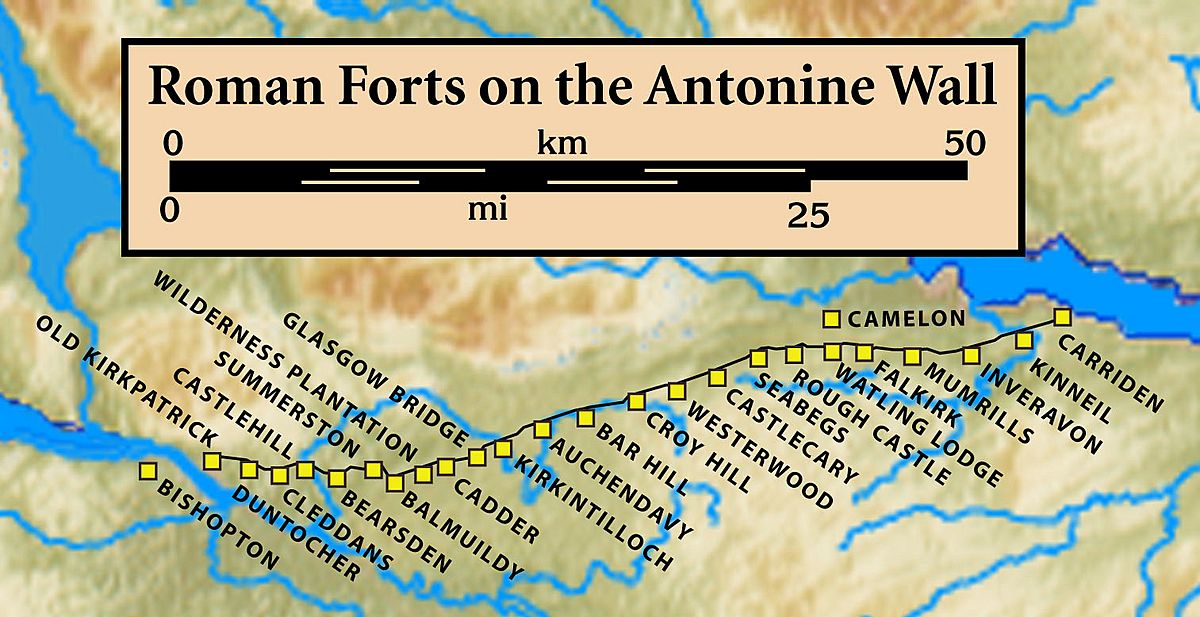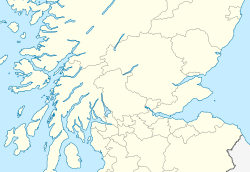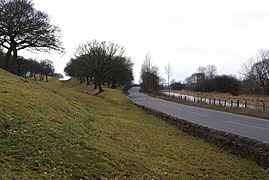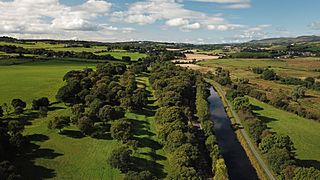Seabegs Wood facts for kids
Quick facts for kids Seabegs Wood |
|
|---|---|
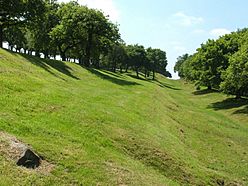 |
|
| Founded during the reign of | Antoninus Pius |
| Founded | 142 AD |
| Place in the Roman world | |
| Province | Britannia |
| Structure | |
| — Turf structure — | |
| Location | |
| Coordinates | 55°59′33″N 3°53′58″W / 55.99241°N 3.8995°W |
| Town | Bonnybridge |
| County | Falkirk |
| Country | Scotland |
| Site notes | |
| Condition | Ruined |
Seabegs Wood was once home to a small Roman fortlet. This fortlet was part of the Antonine Wall, a huge barrier built by the Romans in Scotland. It was built around 142 AD during the time of Emperor Antoninus Pius. Today, the site is ruined, but its history tells us a lot about Roman life in Scotland.
Contents
Discovering Seabegs Wood
The shape of the Antonine Wall can still be seen at Seabegs. Older archaeologists wrote that the ditch here was very deep and full of water. This shows how well the wall was built.
Digging for Clues
In the 1890s, a group called the Antonine Wall Committee dug several trenches. They found the stone base of the Roman rampart. More digging in 1977 found a Roman fortlet connected to the rampart's south side. In 1981, a small mound was checked, but not much was found.
Roman Forts and Soldiers
Seabegs Wood was a small fortlet, not a large fort. It was located between two bigger Roman forts: Castlecary to the west and Rough Castle to the east. Experts like Sir George Macdonald thought that because these forts were far apart, there had to be another Roman building in the Seabegs area.
What We Know and Don't Know
No Roman coins or special writings have been found at Seabegs Wood. However, there are two Roman marching camps nearby. These camps were temporary places where soldiers stayed while on the move. They are located at Dalnair and Milnquarter.
Life in a Roman Fort
Many Roman forts along the Antonine Wall held about 500 soldiers. Bigger forts, like Castlecary, could hold around 1000 soldiers. These forts likely also sheltered women and children, even though soldiers were not officially allowed to marry. There were probably also many civilians living around these Roman sites.
-
The Wall, The Road and the Forth and Clyde Canal at Seabegs Wood
